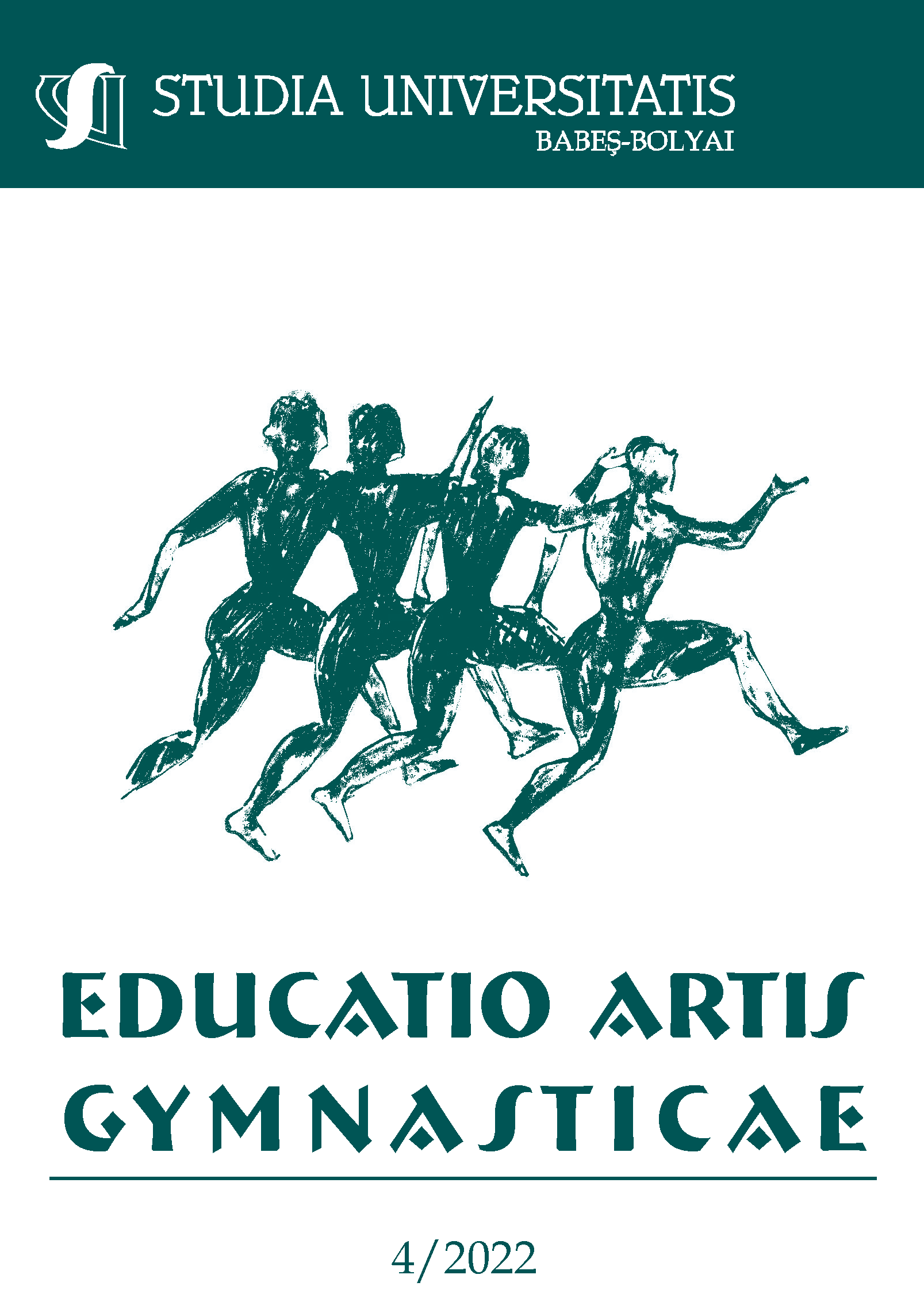COMPARISON BETWEEN UNIPEDAL AND BIPEDAL PLANTAR FLEXIONS USING TIME UNDER TENSION METHOD
DOI:
https://doi.org/10.24193/subbeag.67(4).41Keywords:
time under tension, triceps surae, plantar flexion, calf muscles, forcesAbstract
Introduction. Bodybuilding is a sport that requires all muscle groups to be similarly developed, bringing an aesthetic physique to the observers. The development of the triceps surae may be a difficult goal to achieve for some athletes. Considering this, we chose to focus on a new training method that induces less stress in muscle groups: the time under tension. Objective. The purpose of the study was to compare exercises used for calf hypertrophy using the time under tension method and to identify the optimal situations in which this method could be used. Methods. Ten subjects, 6 male and 4 female, age of 25.7±4.9 years old, height 174.7±9.5 centimeters, body weight 82±17.8 kg and with varied levels of fitness, participated in the study. The plantar flexions were done with body weight only on one and both feet. The exercises we tested were done on a 3 second cycle: 3 seconds on the upwards movement and 3 seconds for the downwards one. The subjects performed a total of 10 repetitions for each exercise. Results. A significant statistical difference was found between the types of plantar flexion measured. This indicates that the analysis of time under tension plantar flexion should take into account the actual type of movement done. Conclusions. Time under tension method for calf muscle hypertrophy should take into consideration the movement characteristics for the focused muscle group. Our results showed that postural balance and body position can influence the force and power output of plantar flexion.
References
Blaauw, B., & Reggiani, C. (2014). The role of satellite cells in muscle hypertrophy. Journal of Muscle Research and Cell Motility, 3–10. Doi: 10.1007/s10974-014-9376-y.
Bompa T. & Buzzichelli C. A. (2019). Periodization. Theory and Methodology Training. Human Kinetics.
Dinyer, T. K., Byrd, M. T., Garver, M. J., Rickard, A. J., Miller, W. M., Burns, S., & Bergstrom, H. C. (2019). Low-Load vs. High-Load Resistance Training to Failure on One Repetition Maximum Strength and Body Composition in Untrained Women. Journal of Strength and Conditioning Research, 1737-1743, Doi: 10.1519/JSC.0000000000003194.
Lasevicius, T., Ugrinowitsch, C., Schoenfeld, B. J., Roschel, H., Tavares, L. D., De Souza, E. O., & Tricoli, V. (2018). Effects of different intensities of resistance training with equated volume load on muscle strength and hypertrophy. European Journal of Sport Science, 772–780. Doi: 10.1080/17461391.2018.1450898.
Mang, Z. A., Realzola, R. A., & Ducharme, J. (2022). The effect of repetition tempo on cardiovascular and metabolic stress when time under tension is matched during lower body exercise. European Journal of Applied Physiology, 1485–1495, https://doi.org/10.1007/s00421-022-04941-3.
Noffal, G. J., & Lynn, S. K. (2012). Biomechanics of Power in Sport. Strength and Conditioning Journal, 20–24. Doi: 10.1519/SSC.0b013e31826f013e.
Schoenfeld, B. J., Peterson, M. D., Ogborn, D., Contreras, B., & Sonmez, G. T. (2015). Effects of Low- vs. High-Load Resistance Training on Muscle Strength and Hypertrophy in Well-Trained Men. Journal of Strength and Conditioning Research, 2954–2963, Doi: 10.1519/JSC.0000000000000958.
Taber, C. B., Vigotsky, A., Nuckols, G., & Haun, C. T. (2019). Exercise-Induced Myofibrillar Hypertrophy is a Contributory Cause of Gains in Muscle Strength. Sports Medicine. Doi: 10.1007/s40279-019-01107-8.
Downloads
Published
How to Cite
Issue
Section
License
Copyright (c) 2022 Studia Universitatis Babeș-Bolyai Educatio Artis Gymnasticae

This work is licensed under a Creative Commons Attribution-NonCommercial-NoDerivatives 4.0 International License.






